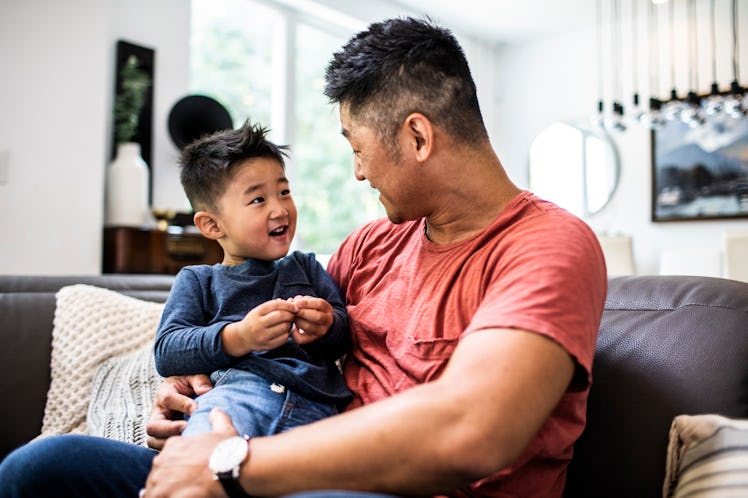The Vygotsky Theory And What It Means For Parents
Vygotsky's theory of cognitive development has some helpful applications for parents looking to use everyday moment to help kids thrive.

Psychologist Lev Vygotsky’s work from the early 1900s is foundational for much of the research in cognitive development over the past century. And by understanding Vygotsky’s theory of cognitive development, parents can have positive and constructive interactions with their kids in the course of everyday life. That’s particularly true for parents who are wrestling with how to build family trust and help their children process frustration. Because Vygotsky’s emphasis on kids learning about the world around them through older and wiser adults turns everyday moments into teaching opportunities.
What Is the Vygotsky Theory?
The Vygotsky theory understands human growth as a socially mediated process where kids pick up their beliefs, cultural values, and problem-solving strategies through cooperative exchanges with “skilled tutors” such as parents or teachers. As kids observe and follow verbal instructions the tutor provides — also known as collaborative dialogue — the child processes the learning and emulates their tutor.
How Collaborative Dialogue Eases Pressure
Vygotsky viewed learning as social in nature and coined the phrase collaborative dialogue to describe the intentional conversations adults have with children. These conversations allow kids to verbalize their thoughts and feelings, and share how those thoughts and feelings inform their actions. According to Elisabeth Netherton, M.D., a psychiatrist with MindPath Health, collaborative dialogue can be freeing for both parents and kids because it allows them to focus on practice instead of outcomes.
“When we remove some of the pressure on ourselves to be perfect, we similarly alleviate the pressure children can feel to be perfect,” she says. “That also makes room for teaching forgiveness, flexible thinking, and a focus on learning and growing as a person rather than on always getting things ‘just right.’”
Netherton gives a relatable example of how a parent reflecting on and talking through their own poor behavior while driving can provide a learning opportunity for their kids.
“After the fact, you can say something like, ‘I value kindness towards other people, and I think that is a significant value for our family. I didn’t get that quite right today when you heard me say some mean things while we were stuck in traffic,’” she suggests. “‘I was feeling really frustrated, but that is not how I want to express my feelings. I am going to practice being kind, and give it another try when we get back in the car later this afternoon.’”
How Scaffolding Lowers Frustration and Builds Trust
The Vygotsky theory also emphasizes a learning process called scaffolding. It’s particularly helpful in providing proactive opportunities through play to model healthy ways of dealing with frustration. For younger kids or kids who get frustrated easily, Netherton suggests focusing on helping them put words to their emotions, empathizing with those emotions, and then focusing on the process of problem-solving together.
“When I talk with kids about the idea of ‘practice,’ I focus on lowering the stakes, emphasizing that this issue at hand is not a life or death scenario,” she says. “Rather than a catastrophe, this ‘stuck point’ is a good place to play around with new ideas.”
Low-stakes situations like playing with Legos are ideal for helping your child build patience and teaching them they can trust you. “It’s helpful to convey that there is an endpoint to the frustration because you are there to help them with it. Focusing on remaining calm helps kids reframe the situation in a way that is less threatening and gives them more room to try things out while helping them re-regulate their emotions,” Netherton says.
You can tell your kids that they can trust you and need to chill out all you want. But for them to internalize that as they get older and face more complex problems, demonstrating both of those truths while working through them regularly has a far better chance of sticking.
This article was originally published on